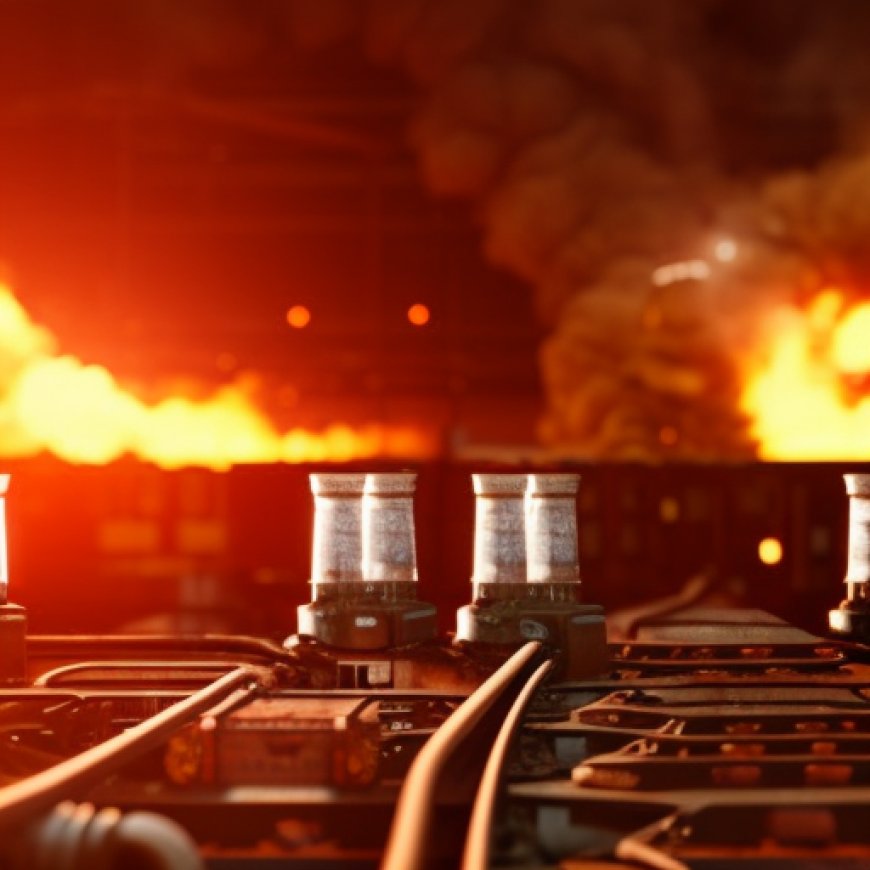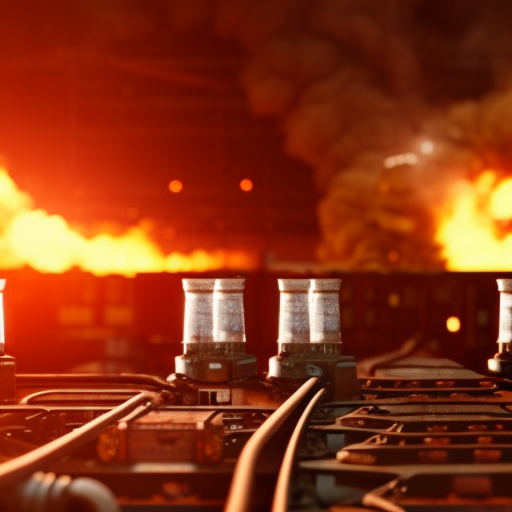Industrial Demonstrations Program Selections for Award Negotiations: Heat
Industrial Demonstrations Program Selections for Award Negotiations: Heat Energy.gov


Decarbonization of Unilever Ice Cream Manufacturing
Location:
Covington, Tennessee; Sikeston, Missouri; St. Albans, Vermont; and Waterbury, Vermont
Federal Cost Share:
Up to $20.9 million
Selectee:
Unilever
Project Summary:
The Decarbonization of Unilever Ice Cream Manufacturing project, led by Unilever, plans to replace natural gas boilers with electric boilers and industrial heat pumps using waste heat recovery across four ice cream manufacturing facilities in Tennessee, Missouri, and Vermont. This project would reduce emissions associated with the production of Ben & Jerry’s, Breyers, Klondike, Magnum, Popsicle, Talenti, and other packaged ice cream and frozen novelty products. The facility upgrades expect to reduce carbon dioxide emissions by more than 14,000 metric tons per year with a pathway to address 100% of heat-related process emissions. Along with reduced emissions, this project has an extremely high replicability potential and will create a model that could lead to further decarbonization throughout the food and beverage sector where approximately 50% of processing emissions are from low temperature heating.
This project plans to create approximately 240-300 construction jobs across the four sites and would help retain manufacturing jobs. The facility in each location uniquely serves the surrounding community. For example, the factory in Covington, Tennessee engages the Tipton County Manufacturing Council and Latinos Memphis to build prosperity in underserved communities; the Sikeston, Missouri facility partners with Southeast Missouri State College for internships; and the Ben & Jerry’s facilities in Vermont support a range of community development initiatives, including the Advancement Project and Milk with Dignity.
Delicious Decarbonization Through Integrated Electrification and Energy Storage
Location:
Champaign, Illinois; Columbia, Missouri; Fremont, Ohio; Holland, Michigan; Kendallville, Indiana; Lowville, New York; New Ulm, Minnesota; Muscatine, Iowa; Mason City, Iowa; and Winchester, Virginia
Federal Cost Share:
Up to $170.9 million
Selectee:
Kraft Heinz
Project Summary:
The Delicious Decarbonization Through Integrated Electrification and Energy Storage project, led by Kraft Heinz, plans to upgrade, electrify, and decarbonize its process heat at 10 facilities by applying a range of technologies including heat pumps, electric heaters, and electric boilers in combination with biogas boilers, solar thermal, solar photovoltaic, and thermal energy storage. The tailored application of these technologies at each facility expects to reduce annual emissions by more than 300,000 metric tons of carbon dioxide per year, translating to a 99% reduction from 2022 levels. By demonstrating the integration of multiple decarbonization pathways, this project seeks to help a major American brand achieve deep decarbonization and serve as an example for other U.S. food and beverage companies to reduce emissions from process heat while reducing energy costs.
This project expects to create an estimated 500 construction jobs across the 10 sites. Three of the 10 project sites (Fremont, OH; Holland, MI; and Muscatine, IA) currently have unionized labor. All sites have People Committees as part of the Kraft Heinz Management System that includes hourly and salaried employee representatives including human resources. An Energy Champion will join the Committee to represent any worker concerns and serve as coordinator between the project team and plant workers. Kraft Heinz anticipates the implementation of new technologies would require additional training and skills for employees at each site. Many of the plants have developed partnerships with community schools to further train and develop plant employees.
Heat Batteries for Deep Decarbonization of the Beverage Industry
Location:
Shelbyville, Kentucky and Plainfield, Illinois
Federal Cost Share:
Up to $75 million
Selectee:
Diageo Americas Supply, Inc.
Project Summary:
In the Heat Batteries for Deep Decarbonization of the Beverage Industry project, Diageo Americas Supply, Inc. (Diageo) plans to partner with Rondo Energy and the National Renewable Energy Laboratory to replace natural gas-fired heat with Rondo Heat Batteries powered by onsite renewable energy and electric boilers at facilities in Shelbyville, Kentucky and Plainfield, Illinois. These upgrades would reduce carbon emissions by nearly 17,000 metric tons per year to decarbonize the production facilities for spirits, ready-to-drink cocktails, and Bulleit whiskey. These facility upgrades would provide a highly replicable blueprint for how manufacturing facilities can integrate thermal batteries with intermittent renewable energy to achieve direct decarbonization while reliably and competitively delivering a consumer-facing product to market.
The project aims to create approximately 144 construction jobs across the two locations. The Plainfield plant is unionized with Liquor and Allied Workers Local 3 and both facilities use unionized contractors. Additionally, Diageo is committed to sharing facility air and water quality monitoring results with the public to inform local communities about reductions in criteria air pollutants as a result of this project.
SDGs, Targets, and Indicators
| SDGs | Targets | Indicators |
|---|---|---|
| SDG 7: Affordable and Clean Energy | 7.2: Increase the share of renewable energy in the global energy mix | Percentage of energy generated from renewable sources in the ice cream manufacturing facilities |
| SDG 9: Industry, Innovation, and Infrastructure | 9.4: Upgrade infrastructure and retrofit industries to make them sustainable | Number of facilities that have replaced natural gas boilers with electric boilers and industrial heat pumps |
| SDG 13: Climate Action | 13.2: Integrate climate change measures into national policies, strategies, and planning | Reduction in carbon dioxide emissions per year in metric tons |
| SDG 8: Decent Work and Economic Growth | 8.5: Achieve full and productive employment and decent work for all | Number of construction jobs created across the facilities |
| SDG 12: Responsible Consumption and Production | 12.2: Achieve sustainable management and efficient use of natural resources | Reduction in carbon emissions per year in metric tons |
| SDG 3: Good Health and Well-being | 3.9: Substantially reduce the number of deaths and illnesses from hazardous chemicals and air, water, and soil pollution and contamination | Sharing of facility air and water quality monitoring results with the public |
1. Which SDGs are addressed or connected to the issues highlighted in the article?
- SDG 7: Affordable and Clean Energy
- SDG 9: Industry, Innovation, and Infrastructure
- SDG 13: Climate Action
- SDG 8: Decent Work and Economic Growth
- SDG 12: Responsible Consumption and Production
- SDG 3: Good Health and Well-being
2. What specific targets under those SDGs can be identified based on the article’s content?
- Target 7.2: Increase the share of renewable energy in the global energy mix
- Target 9.4: Upgrade infrastructure and retrofit industries to make them sustainable
- Target 13.2: Integrate climate change measures into national policies, strategies, and planning
- Target 8.5: Achieve full and productive employment and decent work for all
- Target 12.2: Achieve sustainable management and efficient use of natural resources
- Target 3.9: Substantially reduce the number of deaths and illnesses from hazardous chemicals and air, water, and soil pollution and contamination
3. Are there any indicators mentioned or implied in the article that can be used to measure progress towards the identified targets?
- Percentage of energy generated from renewable sources in the ice cream manufacturing facilities
- Number of facilities that have replaced natural gas boilers with electric boilers and industrial heat pumps
- Reduction in carbon dioxide emissions per year in metric tons
- Number of construction jobs created across the facilities
- Reduction in carbon emissions per year in metric tons
- Sharing of facility air and water quality monitoring results with the public
4. Table: SDGs, Targets, and Indicators
| SDGs | Targets | Indicators |
|---|---|---|
| SDG 7: Affordable and Clean Energy | 7.2: Increase the share of renewable energy in the global energy mix | Percentage of energy generated from renewable sources in the ice cream manufacturing facilities |
| SDG 9: Industry, Innovation, and Infrastructure | 9.4: Upgrade infrastructure and retrofit industries to make them sustainable | Number of facilities that have replaced natural gas boilers with electric boilers and industrial heat pumps |
| SDG 13: Climate Action | 13.2: Integrate climate change measures into national policies, strategies, and planning | Reduction in carbon dioxide emissions per year in metric tons |
| SDG 8: Decent Work and Economic Growth | 8.5: Achieve full and productive employment and decent work for all | Number of construction jobs created across the facilities |
| SDG 12: Responsible Consumption and Production | 12.2: Achieve sustainable management and efficient use of natural resources | Reduction in carbon emissions per year in metric tons |
| SDG 3: Good Health and Well-being | 3.9: Substantially reduce the number of deaths and illnesses from hazardous chemicals and air, water, and soil pollution and contamination | Sharing of facility air and water quality monitoring results with the public |
Behold! This splendid article springs forth from the wellspring of knowledge, shaped by a wondrous proprietary AI technology that delved into a vast ocean of data, illuminating the path towards the Sustainable Development Goals. Remember that all rights are reserved by SDG Investors LLC, empowering us to champion progress together.
Source: energy.gov

Join us, as fellow seekers of change, on a transformative journey at https://sdgtalks.ai/welcome, where you can become a member and actively contribute to shaping a brighter future.







